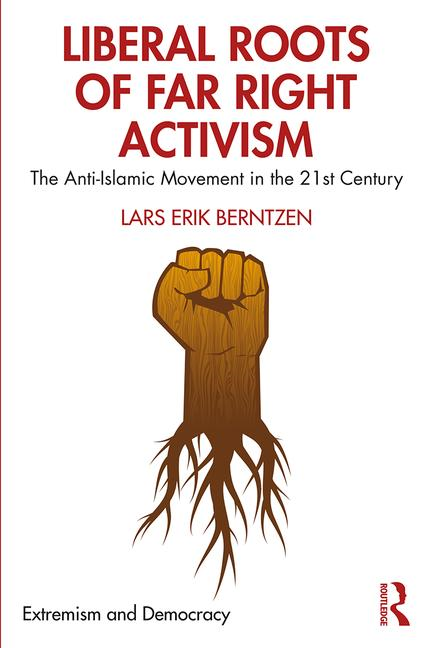Liberal Roots of Far-Right Activism, by Lars Erik Berntzen, discusses the nature and implications of the anti-Islamic turn of the contemporary far right in Western Europe, North America and beyond.

Photo by Camille Brodard on Unsplash
In Liberal Roots of Far Right Activism: The Anti-Islamic Movement in the 21st Century, I examine the anti-Islamic turn and expansion of the far right in Western Europe, North America and beyond from 2001 and onwards. The terror attacks against the United States on September 11, 2001 (9/11) sparked the formation of a new anti-Islamic movement. It is primarily an extra-parliamentary phenomenon consisting of activist groups, think-tanks, alternative media outlets but also some political parties. This movement makes up a sizable part of what is commonly described as the far right in Western Europe and North America today. But what is this the nature of this phenomenon really? To get a grip on what this movement is, we must tackle a paradox.
Liberal paradox
The paradox is this: many anti-Islamic groups style themselves as human rights organizations and defenders of Western civilization, including democracy and freedom of speech, often proclaiming their support for Jews, gender equality and LGBT rights. Viewed through the lens of history, it seems strange that the anti-Islamic far right today should embrace and defend the very things the far right has been fighting against. What should we make of this, and how deep does it run?
 The broad academic consensus is that their liberal positions do not run deep at all. Instead, their liberal stances are primarily explained as a strategy to gain legitimacy and defend against allegations of racism. In this sense, it is understood as a thin veneer masking their true positions - that the far right hides a radical "back-stage" behind its moderate "front stage" which is racist, anti-Semitic, homophobic, against women's rights, and possibly outright hostile to democracy.
The broad academic consensus is that their liberal positions do not run deep at all. Instead, their liberal stances are primarily explained as a strategy to gain legitimacy and defend against allegations of racism. In this sense, it is understood as a thin veneer masking their true positions - that the far right hides a radical "back-stage" behind its moderate "front stage" which is racist, anti-Semitic, homophobic, against women's rights, and possibly outright hostile to democracy.
Such critical positions are not without merit, but they are primarily based on studies of older far right parties that have undergone an ideological reorientation since 9/11. It is not given that these findings are transferrable to the new anti-Islamic groups and initiatives that have sprung up over the last two decades. This book therefore maps the new anti-Islamic movement in its totality, covering the movements' origins, their official ideology and then goes beyond that to study their online networks, the views of their online sympathizers and finally the emotional drivers of mobilization.
No child of the old far right
Let us start by looking at the origins of this movement. It tells us that it is a new addition to the far-right family, but no child of the old far right. Since its inception, the anti-Islamic cause was borne by a curious mix of people with predominantly leftist and conservative backgrounds, all of whom professed their attachment to many liberal ideals. Their leaders and intellectuals - many of them journalists, schoolteachers and historians - came to see their own political camps as ignorant of the dangers posed by Islam. In their eyes, Islam was not a regular religion but a totalitarian ideology equivalent to communism and fascism.
The view that Islam is a totalitarian and existential threat to Western civilization is broadly consistent across organizations and countries in Western Europe and North America. They are united in seeing not only Christianity but also issues such as gender equality and the rights of non-Muslim minorities as threatened by Islam. Their inclusion of both "modern" and "traditional" elements have persisted since the movements beginning and bears strong traces of their origins from outside the far right.
Over time they have embraced increasingly authoritarian solutions, such as banning mosques and rewriting the Quran - which is compared to Hitler's Mein Kampf. Ostensibly starting from a position of tolerance, they have concluded "in order to maintain a tolerant society, the society must be intolerant of intolerance". That is, Islam as the ultimate manifestation of intolerance must be met with intolerance itself to preserve a tolerant Western civilization.
Four waves of expansion
Propelled by their belief in a civilizational struggle between the West and Islam, these activists managed to establish a transnational anti-Islamic movement spanning Western Europe, North America and increasingly Eastern Europe. The movement has gone through four distinct waves of transnational expansion and consolidation. Each subsequent wave is defined by an upsurge in organizational activity, epitomized by the creation of a new activist group which managed to establish offshoots in several countries. What has sparked these four waves of expansion? The answer is terror attacks and other moral shocks. The first wave was triggered by Al-Qaeda's attacks against the United States on 9/11, whilst the second wave was driven by the Mohammed cartoon crisis. The third and fourth waves were triggered by more local shocks but amplified by Islamist terror attacks.
The four waves of anti-Islamic expansion
| Time period |
First wave (2001-2005) |
Second wave (2005-2009) |
Third wave (2009-2014) |
Fourth wave (2014-) |
| Starting point |
United States and the Netherlands |
Denmark, Britain and the United States |
Britain |
Germany |
| Main initiatives |
Little Green Footballs, Pim Fortuyn List |
Stop Islamization, Act! For America |
Defence Leagues |
PEGIDA |
| Primary arenas |
Traditional websites, party politics |
Traditional websites and streets |
Facebook and streets |
Facebook and streets |
| Moral shock |
September 11, 2001 terror attacks |
Muhammed cartoon crisis |
Islamist picketing of soldier funerals |
German Salafists vs Kurds; Charlie Hebdo attack |
Even though many of the anti-Islamic leaders and intellectuals carried with them ideas that are not of the far right, it is not given that the "liberal" aspects have had a substantial impact. For instance, does this civilizational worldview which builds on both liberal and traditional elements structure their organizational networks? And moreover, do these messages resonate among their online members? Or are the online members cut from the same cloth as the old extreme right - anti-Semitic, homophobic, explicitly racist and anti-democratic?
Birds of a feather flock together
Let us look at their online organizational networks first. Starting with the Facebook pages of 27 anti-Islamic groups, I wound up uncovering a transnational constellation of approximately 3,600 and 4,600 groups in March 2015 and March 2016. Of these, 1 300 groups were explicitly anti-Islamic.






